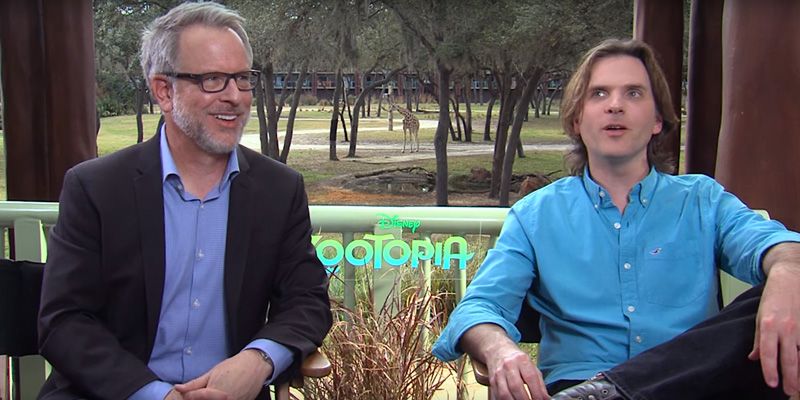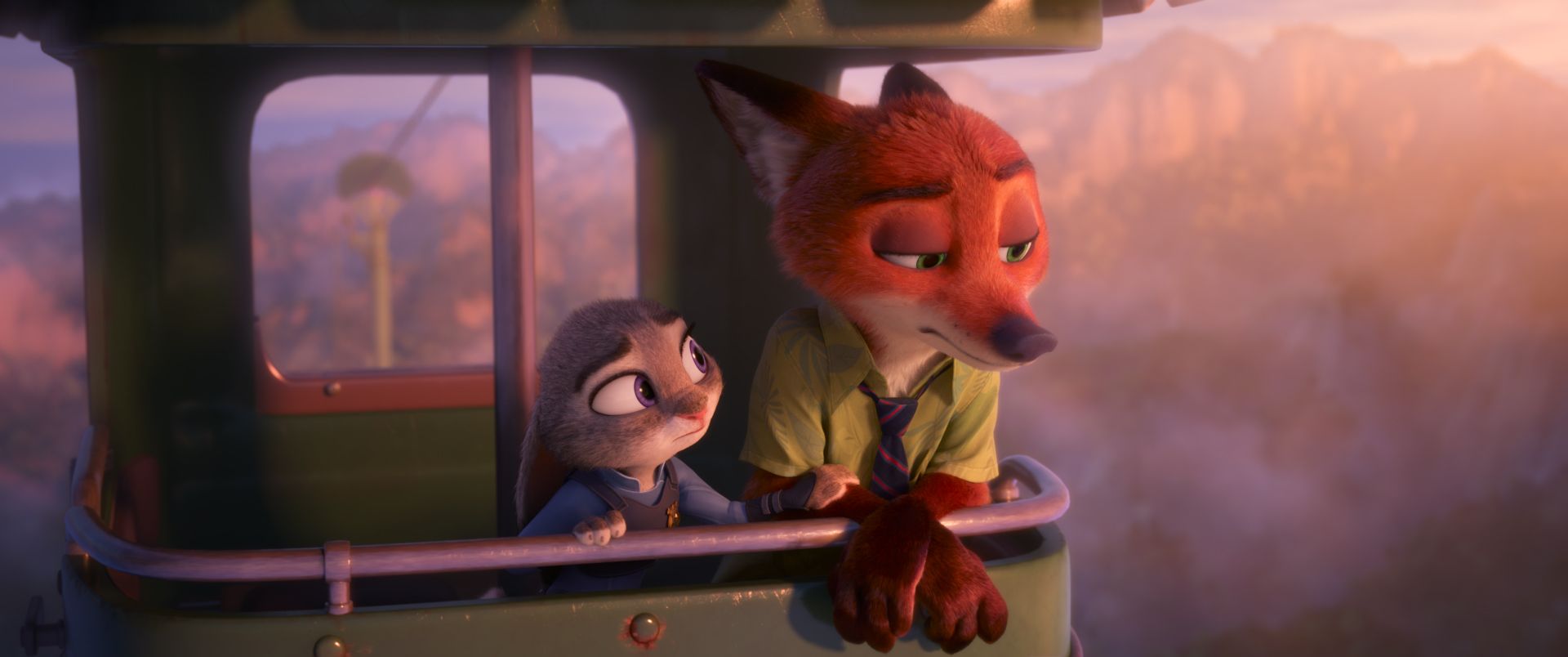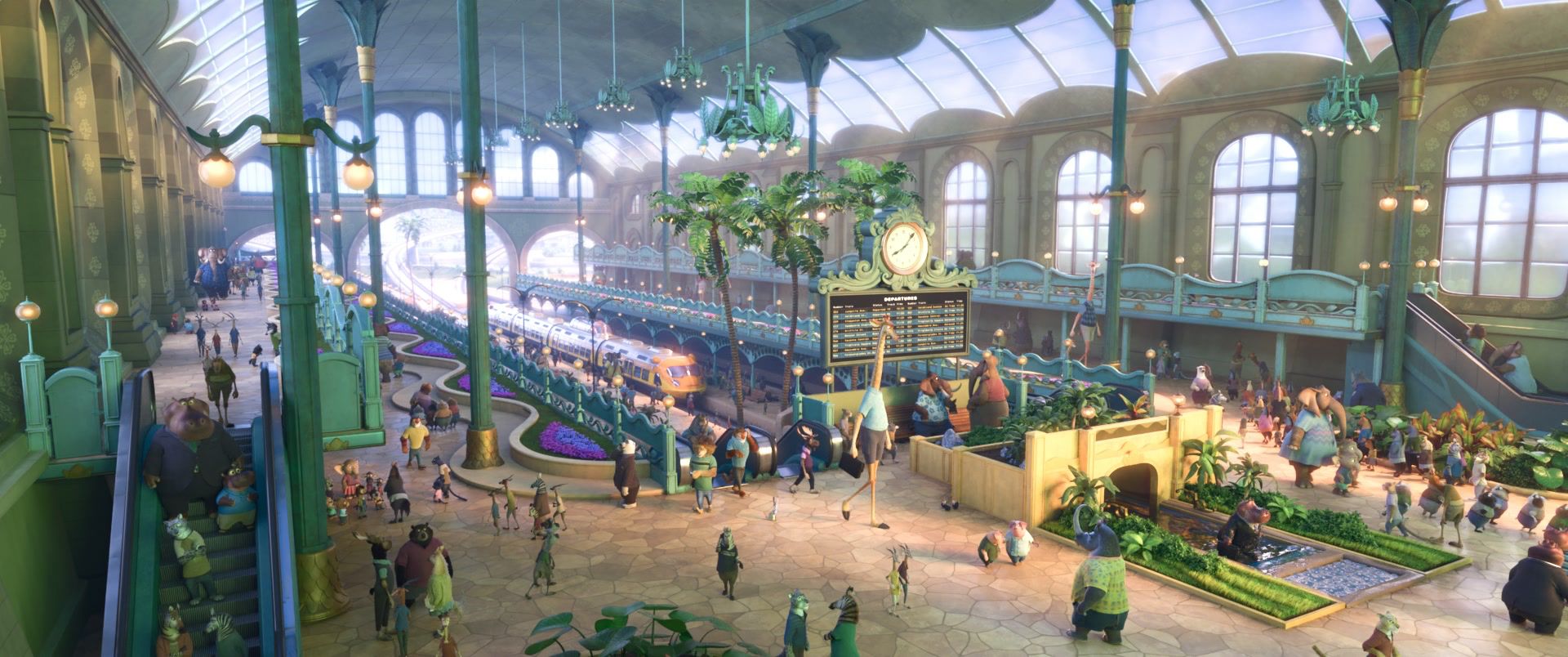A creative team of Disney animation veterans coming from projects including Bolt and Wreck-It Ralph teamed up over the last few years for the studio's 55th animated feature, a story about a world where animals have evolved and formed their own mammal metropolis called Zootopia. Moviegoers will discover the big city through the eyes of young and eager police cadet Judy Hopps, a bunny rabbit, who must overcome prejudice against certain stereotypes and team up with a Fox named Nick Wilde.
I sat down with directors Byron Howard and Rich Moore at the fitting location of Disney's Animal Kingdom where the pair, alongside other department heads, spent time observing animals in their habitat and working alongside animal experts. And the first thing I asked, was how they chose their lead characters to tell this story.
First off guys I want to say congratulations. This movie is quite an achievement. It’s impactful and I think it’s very special. Part of that has to do with the themes, which I want to ask about in a second. But the other part of it is the very grounded and realistic characters. For Nick and Judy, why did you guys choose a bunny rabbit and a fox?
[laughter]
Rich Moore: Well they’re just so damn cute.
Byron Howard: Well, that is a big reason. They are appealing. People like rabbits and people like foxes. If a story was going to be about a little animal that wanted to be a big cop, then we thought, “Well, it’s a little tiny fluffy rabbit that everyone underestimates is a great character. That’s a character that’s got a lot in her way and it’s a character that has to find a way to surmount all of these different obstacles that are going to be thrown in her path.”
In doing research we found out that the natural enemy of the rabbit is the fox. And no matter where you go in the world, rabbits and foxes, they just don’t get along. We thought that’s a great ingredient for a good buddy movie. And they’re just darn cute, like Rich said.
Were other animals considered for any of the lead roles?
Byron Howard: At one point we did talk about, “Well, if it’s a rabbit, should it be something than a fox? Should it be a tiger or a lion?” But then it started to feel like, “Well, is it sort of like a father/daughter relationship?” There was something about keeping them kind of the same size. Even though Nick is a predator, he’s still a small predator. And he’s still an underdog in the world. There are these big bears and lions and tigers that are much, much bigger than him…
Rich Moore: It puts on the same level, I think.
Byron Howard: Yeah. They relate much more.
You guys spent a year and a half research animals in their habitat. What was the most difficult part from what you guys learned to adapt into this film?
Byron Howard: We were really committed to scale in the movie. A lot of times in other animated films they’ll fudge the scale. They’ll make a mouse like two feet tall and make an elephant like 10 feet tall. So everything gets a little closer. You kind of accept in cartoons…
Rich Moore: They did it with Mickey Mouse.
Byron Howard: Mickey is supposed to be about this big, right?
Rich Moore: Yeah. Well, but he’s as big as a duck.
[laughter]
Byron Howard: This mouse is as big as a duck!
Byron Howard: But no, in Zootopia, mice are mouse-size and giraffes are giraffe…In fact, it takes 95 Zootopian mice stacked on top of each other to equal one Zootopia giraffe. We stuck to that rule and we said, “No matter what it does to the buildings, or the trains, or the taxis, or the restaurants or whatever, we’re going to stick to it.” It made the world very difficult to put together. But when you watch the movie, I think you really go, “Well, this would really work. If animals evolved and figured out a city, this I what it would be like.”
Rich Moore: And it adds to the entertainment.
Byron Howard: Yeah, totally.
I read that there are 64 different species of animals in this film. Were there any species or environments that you didn’t get to include in this one but you’d love to do in a sequel?
Rich Moore: Well, it seemed that people kept wanting…people on our writing staff, on our story staff wanted to include a goat over and over…
Byron Howard: [laughs] Of all things.
Rich Moore: Of all things, a goat. There were jokes about screaming goats and fainting goats and an old goat that was Judy’s partner as a meter maid for a while. It just seemed like the goat was not going to make it in this movie. The goat always got cut…
Byron Howard: She didn’t. She didn’t make it.
Rich Moore: There was a point where we thought, “The goat is finally in. this is not going to go anywhere. This is it. No way the goat going to leave.” Then finally it was like, “OK. The goat’s…”
Byron Howard: Yeah. We actually built the goat and then we…
Rich Moore: There was a goat character. We cut her out.
Byron Howard: Yeah. She’s gone.
Obviously this film tackles some very important and timely themes. Was the pain for Zootopia to tackle that with the social dynamics of the animal kingdom from the very beginning or did it just fit into what you guys were building?
Byron Howard: It evolved. Doing research into the animal world with mammals, we figured out that…it was a very interesting fact, which is 90% of animals are prey animals and 10% are predators. We thought even if these animals have evolved over a period of 1,000 years and put that eating thing behind them long ago, do you think they would have completely gotten rid of that mistrust of each other? That was a very interesting way to build the story for us. These two groups that don’t get along, that don’t see eye to eye, just like our own world.
I think that was a great way especially for a buddy movie to start—a predator animal, a prey animal, very different but learning about each other and coming to gain a different appreciation for their own viewpoint through their character growth. It was terrific.
Rich Moore: And that was part of the charge of creating a new kind of unique talking animal world, because we didn’t want to just say, “Well, all these animals, even the ones that you see eat one another live together in harmony and we never address that.” It seemed like that was the juicy part. That was the really interesting kind of dynamic that we wanted to know, “Well, how did they get there? How did that happen? And what would happen if that social contract kind of broke down between them? What would happen to their world if they went back to how they used to be?”
Next: Stay Tuned For Cast Interviews Tomorrow!
The modern mammal metropolis of Zootopia is a city like no other. Comprised of habitat neighbourhoods like ritzy Sahara Square and frigid Tundratown, it’s a melting pot where animals from every environment live together—a place where no matter what you are, from the biggest elephant to the smallest shrew, you can be anything. But when rookie Officer Judy Hopps (voice of Ginnifer Goodwin) arrives, she discovers that being the first bunny on a police force of big, tough animals isn’t so easy. Determined to prove herself, she jumps at the opportunity to crack a case, even if it means partnering with a fast-talking, scam-artist fox, Nick Wilde (voice of Jason Bateman), to solve the mystery.
Directed by Byron Howard (Tangled, Bolt) and Rich Moore (Wreck-It Ralph, The Simpsons), co-directed by Jared Bush (Penn Zero: Part-Time Hero), and produced by Clark Spencer (Wreck-It Ralph), Walt Disney Animation Studios’ comedy-adventure Zootopia opens in theaters on March 4, 2016.



